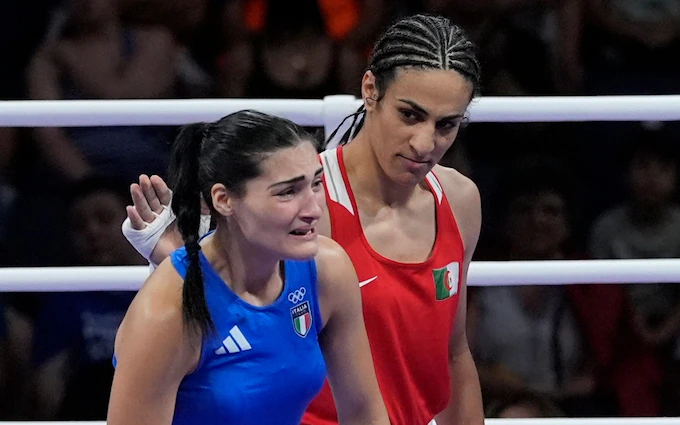The boxing event at the Paris Olympics has sparked a fierce and very public debate surrounding the gender of one competitor. This controversy has unfolded mainly on social media, drawing in members of the boxing community and others who have taken sides. Both the International Olympic Committee (IOC) and the International Boxing Association (IBA) have issued public statements on the matter.
In the round of 16 welterweight bout, Algeria’s Imane Khelif secured a victory over Italy’s Angela Carini in just 46 seconds. Carini’s defense was significantly lacking throughout the bout, and she took a direct hit to the face, which led her to remark post-match that she had never been hit so hard before.
There is no evidence to support claims that Imane Khelif man or transgender. Khelif was born a cis woman, as indicated in her passport, which is the basis the IOC uses to determine eligibility for women’s events. She has been competing in women’s competitions for several years, including representing Algeria in the Tokyo 2020 Olympics, where she reached the quarterfinals. Khelif also competed in the AIBA World Championships, finishing 17th in 2018, 33rd in 2019, and reaching the final in 2022 before losing to Amy Broadhurst.
Understanding Sex Testing in Sports
Sex testing in sports has faced significant scrutiny from organizations like Human Rights Watch, which argue that these tests infringe upon fundamental rights to privacy and dignity. The tests that led to the disqualification of Khelif and Lin by the IBA in 2023 remain confidential, leaving the specific reasons for their barring unclear.
Female athletes with differences of sexual development (DSD) are frequently subjected to such tests. However, Khelif has not stated that she has DSD. DSD refers to a group of conditions affecting genes, hormones, and reproductive organs, often resulting in higher natural testosterone levels in females. These traits typically become apparent during puberty when secondary sex characteristics like facial hair, breast tissue, or distinctive body shapes start to develop.
Estimating the prevalence of DSD traits is challenging, as many individuals live without ever knowing they have such traits. Scientists estimate that up to one in 50 people might be born with DSD traits. Individuals with DSD can identify with any gender.
In preparation for the Paris Games, the IOC introduced new regulations for athletes with DSD. According to these rules, inclusion should be the default, and athletes with DSD should only be excluded from women’s competitions if there are clear fairness or safety concerns. The IOC reaffirmed on Friday that all athletes in the boxing tournament comply with eligibility and medical regulations.
IOC spokesperson Mark Adams acknowledged the concerns surrounding testing, fairness, and safety, stating, “Everyone wants a black-and-white explanation of how we can determine this. That explanation does not exist in the scientific community or anywhere else.”
The History of Sex Testing in Sports
The policing of women’s bodies in sports is not a recent phenomenon. Systemic medical examinations began around the 1936 Berlin Olympics. At the 1966 European Athletics Championships in Budapest, female athletes underwent visual examinations of their genitals and secondary sexual features by a panel of three female doctors, a practice often referred to as “nude parades.”
It was not until the 1990s that blanket sex tests were abandoned by many major sports bodies, including the IOC in 1999, which now conducts medical evaluations on a case-by-case basis.
Caster Semenya, South Africa’s double Olympic 800m track champion, who has naturally higher testosterone levels associated with DSD, remains a central figure in this debate. Since 2019, she has been barred from certain competitions under World Athletics regulations unless she takes medication to lower her testosterone levels. Earlier this year, she appeared at the European Court of Human Rights (ECHR) to continue her challenge against these regulations.
In recent years, as the debate over women’s bodies in sports has intensified, governing bodies for athletics, cycling, swimming, and rugby union have tightened their regulations to exclude competitors who have undergone male puberty from women’s events.























